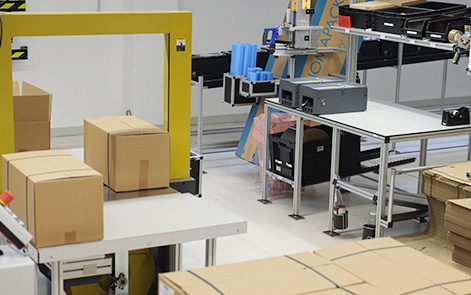Lean production with maximum vertical integration
FEIG ELECTRONIC operates process-optimized production based on lean principles with maximum vertical integration. All our manufacturing activities are based in Weilburg, Germany, in an 8,000 sqm facility, forming a complete value stream from SMT production and individual work systems to device assembly and function testing.
Surface-Mount Technology (SMT)
With SMT, FEIG ELECTRONIC offers a degree of vertical integration that provides maximum flexibility in the fulfillment of customer requirements. The close links between the development department and product manufacturing result in optimum production processes and therefore adherence to delivery deadlines. The two-line facility at FEIG ELECTRONIC is designed to fit 80 million components per year.
Solder paste is applied to the PCB with a jet printer. Because no template is required, this method is also suitable for very small production runs (even down to a batch size of 1).
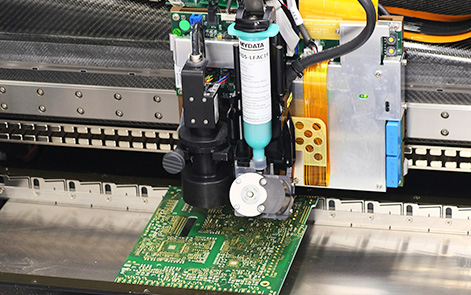
The component placement machine places up to 1,600 components for 270 different assemblies (PCBs).
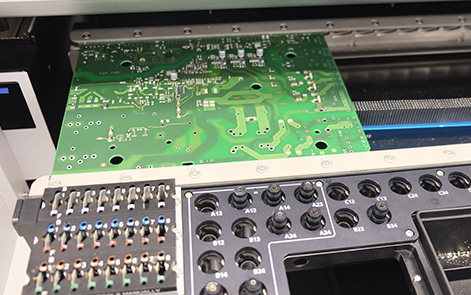
After the boards are populated, the assemblies undergo automated optical inspection (AOI).
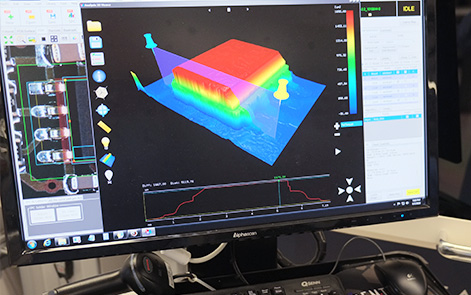
Lean work systems
The use of partially autonomous work groups on various work systems organized by product are very important at FEIG ELECTRONIC. The large degree of self-management of work and cooperation processes, combined with planning, decision-making, and control functions as well as simple maintenance tasks, ensure a high degree of variety and self-realization in day-to-day work, forming the basis for the lasting high quality of FEIG products.
Manual placement with THT (Through Hole Technology) is used to fit additional components on PCBs that have already been populated on both sides with SMT.
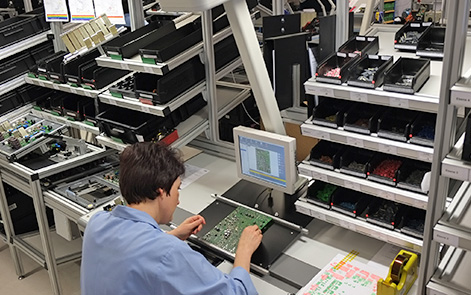
These additional components are soldered with the aid of selective soldering systems.

Finally, the fully manufactured assembly undergoes a 100% electrical function test.

Device assembly followed by function test
Device assembly is followed by a comprehensive function test. This is not limited to simply measuring the required parameters. Instead, we test the product with respect to real-life requirements, for example by connecting controllers to different drives or configuring RFID products for specific applications.
In the final assembly stage, the current firmware is added to the tested assemblies and they are fitted in a housing according to the device type.
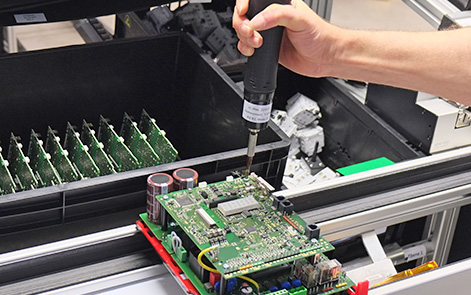
Before packaging, a final check takes place.
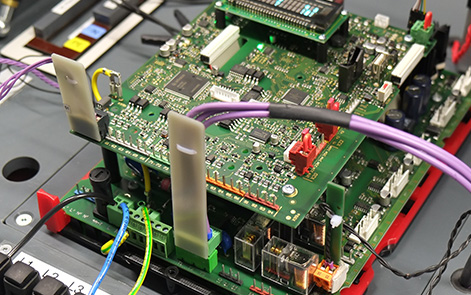
After being packaged, the devices are transferred to the warehouse or shipped directly to the customer.
